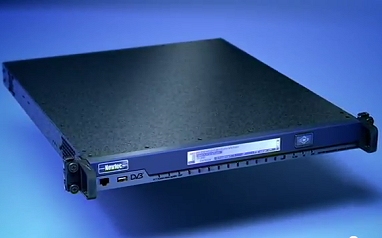PBS Selects Newtec Satellite Modulators for NGIS Transition
ALEXANDRIA, VA, & SINT-NIKLAAS—PBS has installed a large set of Newtec M6100 Broadcast Satellite Modulators for content distribution across its nationwide network. The installation is part of a major upgrade to DVB-S2 and H.264 modulators while at the same time implementing Carrier ID to reduce Radio Frequency (RF) Satellite interference. PBS has 354 member TV stations.

Newtec M6100
Nearing the completion of its 10-year project, the PBS Next Generation Interconnection System (NGIS) project, which is set to replace and significantly upgrade the current infrastructure that enables PBS, regional distributors, and other entities to distribute programming for broadcast by public television stations. The result of the upgrade to these latest technologies allows PBS to reduce its satellite capacity requirement from four to three transponders.
Newtec has been working with companies in the satellite industry to develop the Carrier ID standard to reduce the impact of the increasing number radio frequency interferences that result when multiple carriers are beamed into the same space segment—resulting in loss of service for hours or days. Carrier ID is a unique “fingerprint” on an uplink carrier which enables satellite operators to identify transmissions to their satellites and coordinate with earth station operators to mitigate signal interference.
Newtec’s M6100 DVB-S2, DVB-DSNG and DVB-S modulator, launched at the 2012 NAB Show, implements Carrier ID implementation. The M6100 is the new generation DVB-S2, DVB-DSNG and DVB-S modulator. It is specifically designed for contribution of television and radio content, which is the primary distribution of content and broadcast Direct-To-Home (DTH) distribution. The modulator interoperates seamlessly with any third party DVB set-top box, professional IRDs and satellite demodulators.
Stefan Petrat, Vice President, Distribution Operations and Engineering of PBS said: “Our success is built on high quality reliable broadcast distribution to our viewers. We like to set an example by implementing Carrier ID across all our uplinks and we know many in our industry will follow, and we encourage others to do so. Only when the industry comes together, can we put a halt to the growing interference problem. Carrier ID allows us to reduce the risk of interference and provides an improved and more efficient service. Newtec’s M6100 is the best solution for our needs.”
PBS and Newtec are supporting the World Broadcasting Unions - International Satellite Operations Group (WBU-ISOG), the GVF (Global VSAT Forum) and SIRG (Satellite Interference Reduction Group) to promote and implement Carrier ID standardization.
Get the TV Tech Newsletter
The professional video industry's #1 source for news, trends and product and tech information. Sign up below.
Look for more news on PBS’s NGIS transition in the Sept. 5 issue of TV Technology.
